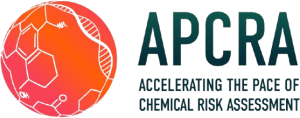Overall goal/objectives:
Per- and polyfluoroalkyl substances (PFAS) are a diverse class of organic chemicals used for various commercial, industrial, and residential applications. These stable chemicals resist degradation, allowing them to accumulate within the environment, posing a potential risk to humans and animals. However, with over 4,000 PFAS in the environment, there is a lack of conventional toxicological data available to inform risk assessment. To address this issue, we formed an international collaborative case study involving research scientists and regulators from Health Canada, United States National Institute of Environmental Health Sciences, Agency for Science, Technology & Research Singapore, and the Universities of Ottawa and Birmingham. The goal of this case study is to compare concentration levels of 24 PFAS and PFAS mixtures (those found in soils and drinking water sources) eliciting transcriptional effects in human liver microtissues to address potency and additivity. Mode of action and kinetic analysis will connect external environmental exposure to internal tissue concentrations, and in turn allow us to assess these responses in a biologically realistic manner. Regulatory applications of this approach include potency for deriving points of departure, read-across information and additivity analysis for emerging PFAS. In addition to providing useful information on PFAS, the case study is expected to facilitate regulatory acceptance of (new approach methods) NAMs/alternative testing strategies in human health risk assessment.
Case Study Leader:
Health Canada (Ivy Moffat)
Collaborators:
Health Canada, NIEHS, A*STAR, Uni Birmingham, University of Ottawa
Status: In progress
- Transcriptional analysis of 24 PFAS and PFAS mixtures in human liver microtissues – completed
- Mode of action and kinetic analyses – near completion
- APCRA case study target completion 2022.
Presentations or publications that have been publicly released:
Presentations:
- Society of Toxicology. March 23, 2021.
- Japanese Ministry of the Environment. March 15, 2021.
- Society for Risk Analysis Dose response specialty group (DRSG). March 3, 2021
- Health Canada Research Forum. January 21, 2021
- University of Ottawa, Bioinformatics webinar series. January 13, 2021
- OECD External Advisory Group on Molecular Screening and Toxicogenomics December 17, 2020
- Society of Canadian Toxicology. December 1, 2020
- Environmental Mutagenesis and Genomics Society. September 12-16, 2020
Publications:
- Rowan-Carroll et al. High-throughput transcriptomic analysis of human primary hepatocyte spheroids exposed to per- and polyfluoroalkyl substances (PFAS) as a platform for relative potency characterization. Toxicol Sci. 2021 May 27; 181(2):199-214. doi: 10.1093/toxsci/kfab039. PMID: 33772556. Toxicological Sciences: Best paper of the year
- Reardon et al. Potency Ranking of Per- and Polyfluoroalkyl Substances Using High-Throughput Transcriptomic Analysis of Human Liver Spheroids. Toxicol Sci. 2021 Oct 27; 184(1):154-169. doi: 10.1093/toxsci/kfab102. PMID: 34453843.
- Addicks et al. Per- and polyfluoroalkyl substances (PFAS) in mixtures show additive effects on transcriptomic points of departure in human liver spheroids. Toxicol Sci. 2023 Jun 28;194(1):38-52. doi: 10.1093/toxsci/kfad044. Toxicological Sciences: Best paper of the year
- Lin et al. Mechanistic Middle-Out Physiologically Based Toxicokinetic Modeling of Transporter-Dependent Disposition of Perfluorooctanoic Acid in Humans. Environ Sci Technol. 2023 May 2;57(17):6825-6834. doi: 10.1021/acs.est.2c05642. Epub 2023 Apr 18. PMID: 37072124; PMCID: PMC10157889.
- Rowan-Carroll et al. Deciphering per- and polyfluoroalkyl substances mode of action: comparative gene expression analysis in human liver spheroids. Toxicol Sci. 2025 May 1;205(1):124-142. doi: 10.1093/toxsci/kfaf023. PMID: 40037795.
- Addicks et al. Identification of Four Mechanisms for Per- and Polyfluoroalkyl Substances (PFAS) Through Transcriptomic Profiling from 24 PFAS-Exposed Human Liver Spheroids. Toxicol Sci. 2025 Jun 12:kfaf075. doi: 10.1093/toxsci/kfaf075. Epub ahead of print. PMID: 40504556.

